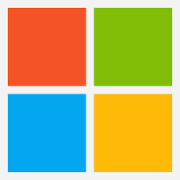Augmented Reality Development Platforms
All Products
(1-25 of 142)
Hololink is a web-based Augmented Reality editor which enables creation of AR through a visual no-code solution.
AR created in Hololink is served directly in the mobile browser without the use of an app, making the whole process from creation to end-user 100% browser-based.
Hololink gives creators access to:…
Learn More About Augmented Reality Development Platforms
What are Augmented Reality Development Platforms?
Augmented reality (AR) development platforms provide tools to create AR products that superimpose computer-generated images into the real world. AR software development tools allow developers to create, position, orient, and track virtual objects and their relationship to the real world. It appears to the viewer as though the object is part of a real-world scene. Machine learning and AI play a significant role in advanced AR, but the development platforms effectively shield AR developers from directly engaging with those components.
AR products create this composite view with software and hardware devices, such as headsets and smartphones that contain cameras, sensors, and digital projectors. Real-time data can be overlaid into the scene, providing contextually relevant information to the user. It can take the form of text, audio, or video. VR/AR headsets offer an immersive AR experience, allowing users to interact with and manipulate 3D models that are projected into a real environment.
Combining AR with the Internet of Things (IoT) enhances user capabilities and improves their experience by providing holographic controls for the device. This application of AR can range from simple appliances to complex medical/surgical devices.
AR use cases:
- Manufacturing
- Gaming
- Medical
- Education/training
- Virtual shopping
- Customer product testing
- Configuration
- Remote collaboration
- Repair and maintenance
- Tours
- Facial animations
- Web/mobile apps
Related software:
- AR content management systems
- AR game engine software
- AR remote collaboration software
- AR training simulation software
- AR visualization software
- Industrial AR platforms
Augmented Reality Development Platform Features
AR development platforms include the following identifiable features:
- 3D asset creation
- Remote rendering engines
- Spatial anchoring
- Cloud anchoring
- Model layering, occlusion, and immersion
- Drag-and-drop manipulation of VR objects
- Intelligent interactions
- Tracking technology, geolocation, and distance-based scaling
- Environmental understanding- object, scene, and image recognition
- Facial recognition and tracking
- Environmental lightning
- Contextual AI
- Virtual buttons turning any surface into a touch screen
- QR and barcode scanners
- App development, multiple programming language support
- Hardware integration and deployment across wearables and mobile devices
- Embed AR into existing apps
- Support different AR platforms- IOS, Android, Windows, Linux, Mac
- Integration with AR development gaming platforms and AR content management systems
- Recording and playback
- Interaction analytics
Augmented Reality Development Platforms Comparison
When purchasing an augmented reality development platform, consider the following:
- AR Platforms Supported: Some AR development platforms only support specific devices (headsets, smart glasses, or smartphones). Other platforms only work for specific operating systems (IOS, Android, Windows, Linux, or Mac). Several AR development platforms will support a wide range of devices and operating systems.
- Cost: For advanced AR applications the hardware is costly, and the applications require a large amount of bandwidth along with very high-resolution streaming, rendered with a high refresh rate. Depending upon the sophistication of the AR product that is being developed, development costs can easily range into hundreds of thousands of dollars.
- AR vs. VR Development Platforms: AR works with virtual objects embedded in the real world; VR creates a complete three-dimensional virtual world. Determine whether you need to develop AR or VR products or require a single solution that supports both types.
Pricing Information
Pricing depends on the platform’s features. Augmented reality development platforms that only support a specific operating system are available for free. Entry-level subscription pricing for AR platforms that support a range of devices and operating systems begins at around $100 a month. One-time on-premises licensing for a mid-range product starts at $3,000. Advanced cloud-based platforms are $500 a month. Enterprise AR development platforms usually require a price quote.
Other Augmented Reality Development Products
Related Categories
Frequently Asked Questions
What does an augmented reality development platform do?
What are the benefits of using augmented reality development platforms?
What are the best augmented reality development platforms?
These are some of the popular augmented reality development platforms:

















